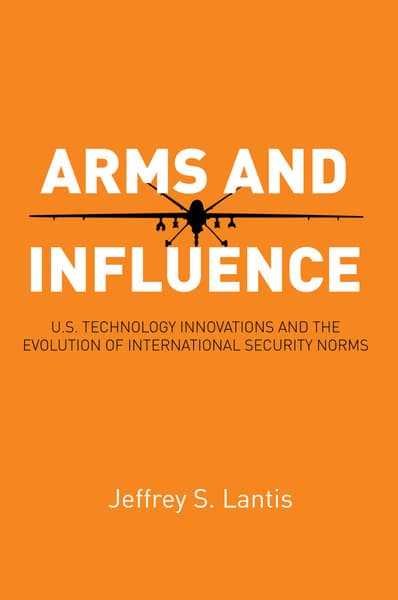 The Evolution and Legitimacy of International Security Institutions, M. Patrick Cottrell (New York: Cambridge University Press, 2016), 280 pp., $99.99 cloth.
The Evolution and Legitimacy of International Security Institutions, M. Patrick Cottrell (New York: Cambridge University Press, 2016), 280 pp., $99.99 cloth.
Arms and Influence: U.S. Technology Innovations and the Evolution of International Security Norms, Jeffrey S. Lantis (Stanford: Stanford University Press, 2016), 280 pp., $29.95 paper, $90 cloth.
The world is going through a crisis of the international liberal order, exemplified by a host of recent shocks: the invasion and annexation of Crimea by Russia; the transnational dimensions of conflicts such as in Syria; the United Kingdom’s decision to exit the European Union; the attempted coup d’état in Turkey and its reversal toward autocracy; and the election and rise of nonuniversalist and illiberal governments as well as politicians who operate under the populist rubric in countries that are viewed as beacons of democracy and stability. These shocks have catalyzed two outcomes. First, the prevailing global norms that serve as the custodians of peace and security have been the subject of revived debate. Second, and relatedly, these shocks have prompted deep reflection on the role of institutions such as the European Union and the North Atlantic Treaty Organization (NATO), as well as the roles of the supposedly democratic members within those institutions.
These trends raise some pressing questions: Will the prevailing norms and institutions withstand such shocks? Will the norms be diminished, or will they ultimately be reaffirmed (and perhaps even strengthened)? Two recent books—The Evolution and Legitimacy of International Security Institutions, by M. Patrick Cottrell, and Arms and Influence: U.S. Technology Innovations and the Evolution of International Security Norms, by Jeffrey S. Lantis—offer context and insight into questions of change and transformation in world politics, particularly in the realm of security. Cottrell and Lantis both explore the complexity of norm making and change, as well as the definitive role that such processes have in the international life of states. Their work complements my own previous writing in which I put forward a model called circuitous norm building, by which norm formation comprises not distinct stages but rather a more fluid formulation. Norm building and change are not necessarily successive and do not develop in a linear progression. Moreover, circuitous norm building implies not only nonlinearity but also a winding course of events and influences by multiple actors. Other scholars in the literature—the second and third waves of constructivists—have explored the contestation and nonlinearity of norm adoption and evolution in different ways and with different empirical cases. Cottrell and Lantis recognize, in company with this literature, that the processes of norm making, diffusion, and transformation are contested, complex, and multilayered.
Full essay is available to subscribers only. Click here for access.
More in this issue
Summer 2017 (31.2) • Review
Rethinking the New World Order by Georg Sørensen
This book provides an elegant account of the nature and inherent tensions in global order. By engaging with ongoing theoretical debates between liberal optimists and ...
Summer 2017 (31.2) • Feature
Pro Mundo Mori? The Problem of Cosmopolitan Motivation in War
In this feature article, Lior Erez explores the problem of motivating soldiers to fight in cosmopolitan wars. First, he argues that the problem is best ...